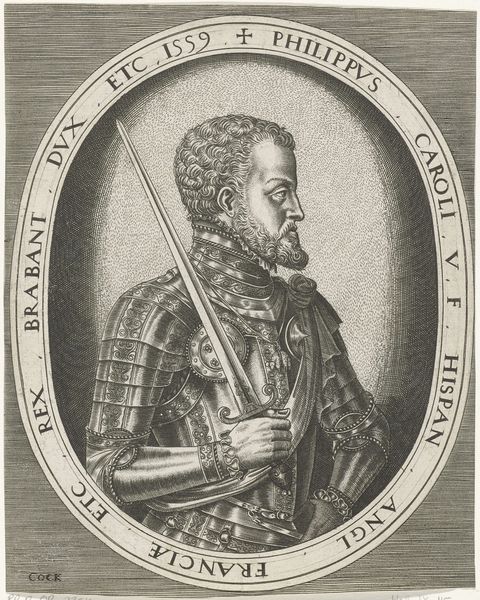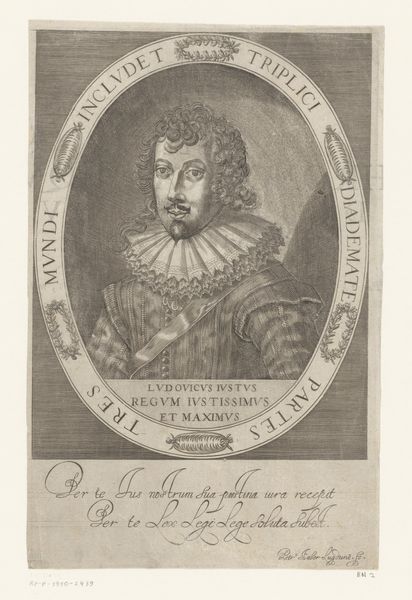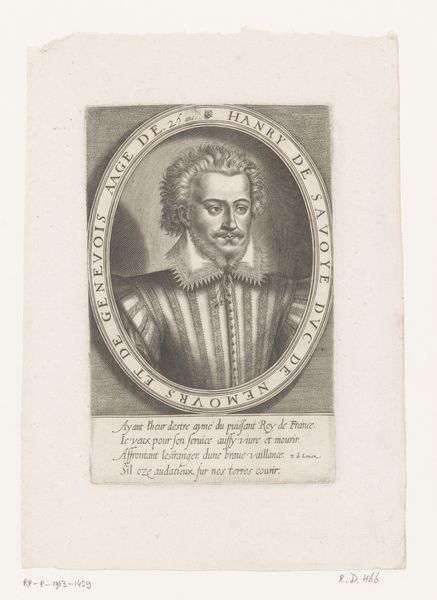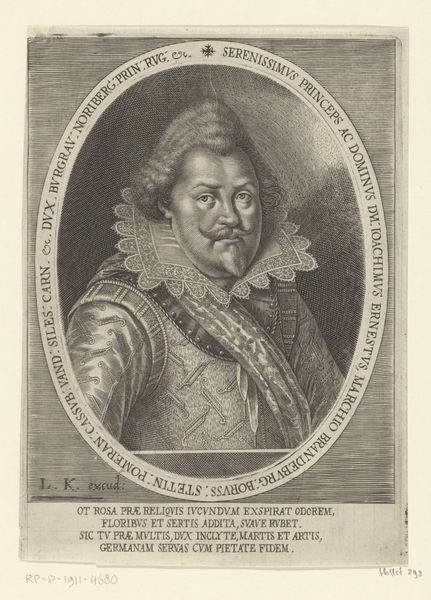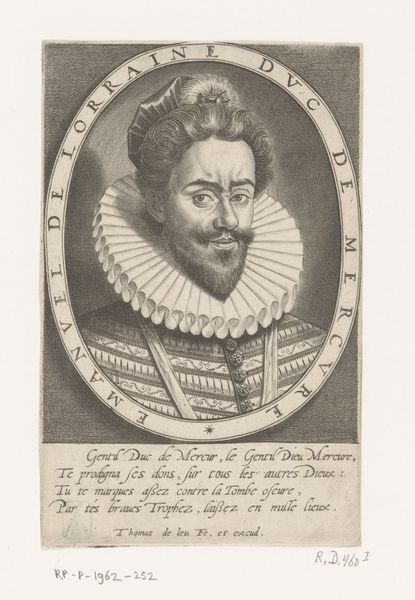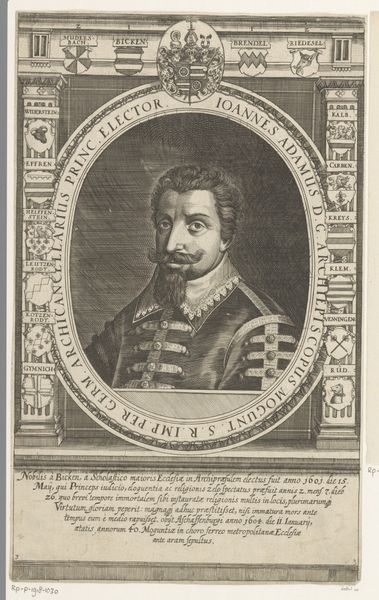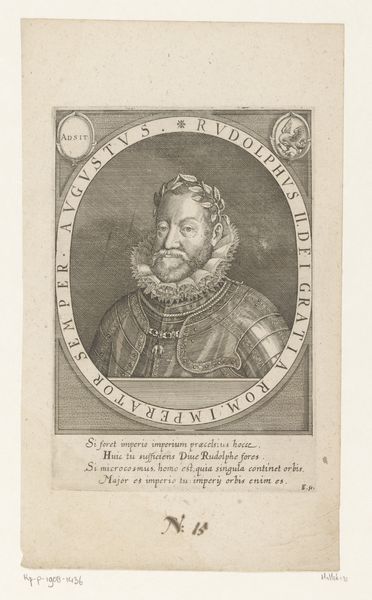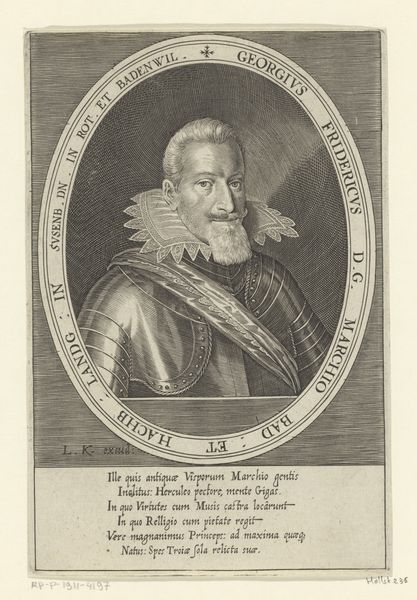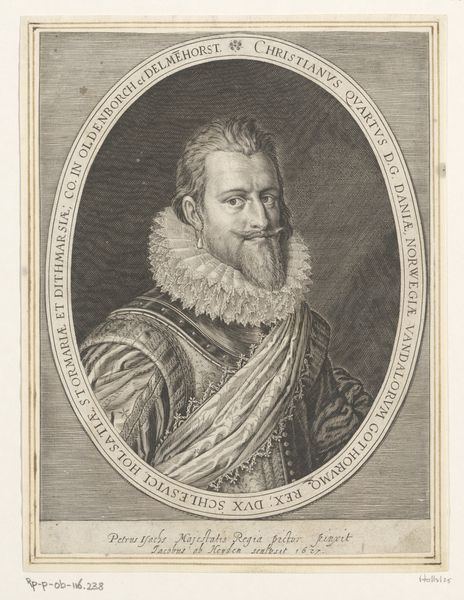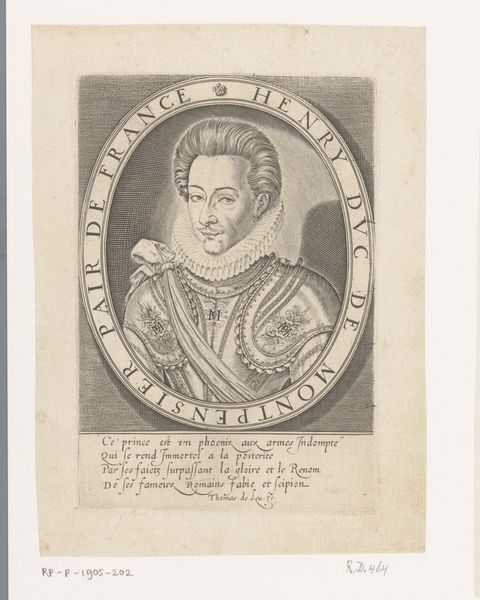
print, engraving
#
portrait
# print
#
old engraving style
#
mannerism
#
history-painting
#
engraving
Dimensions: height 146 mm, width 97 mm
Copyright: Rijks Museum: Open Domain
This portrait of Charles de Gontaut, made by Thomas de Leu around the turn of the 17th century, is an engraving. The image is realized through a deeply skilled, labor-intensive process. First, the artist would have used a tool called a burin to cut lines into a copper plate. The plate is then inked, and the surface wiped clean, leaving ink only in the engraved lines. Finally, the image is transferred to paper under high pressure. Consider how the incised lines define the portrait. De Leu has expertly used them to render the texture of Gontaut’s hair and beard, the folds of his clothing, and the contours of his face. The inscription around the oval adds to the sense of detail and precision. Engraving like this was not just a means of artistic expression. It was also a reproductive technology, allowing images to be disseminated widely. By understanding the materials and processes involved, we can appreciate both the artistry and the social function of this striking portrait.
Comments
No comments
Be the first to comment and join the conversation on the ultimate creative platform.

